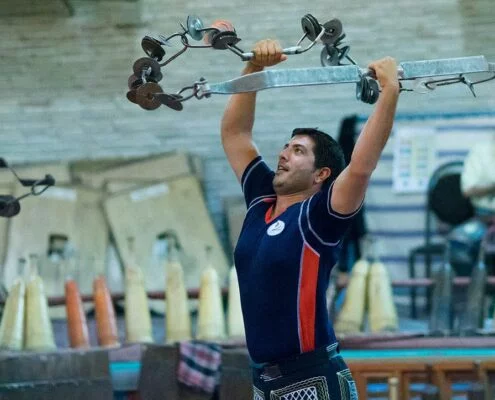Different forms of sports have been practiced throughout years of human existence on earth, on which the geographical, cultural, and historical elements have left their mark in a way that these sports are shaped to represent the country’s moral, historical and cultural standards.
Pahlevani and Zourkhaneh rituals and athletics is the name that stands for traditional Iranian athletics. It essentially is a form of wrestling and preparations for it, in the form of gymnastic movements and climaxing with the core of combat practice. This originated in ancient Persia hundreds of years back and has led the way for modern-day wrestling. However, these types of ancient athletic performances include more than just wrestling. In this blog, we will introduce Iran’s ancient athletics, the rituals related to it, and the meaning behind it all.
Ancient Iranian Athletics; Where Does It Come From?
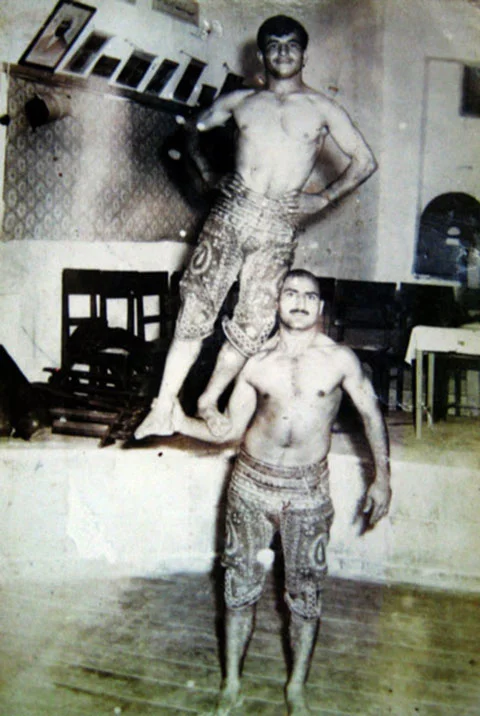
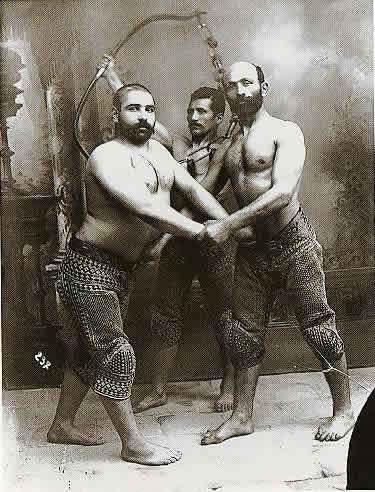
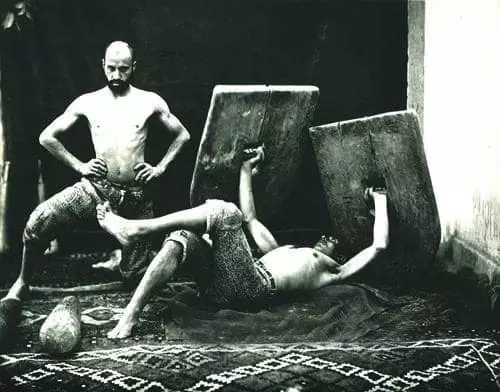
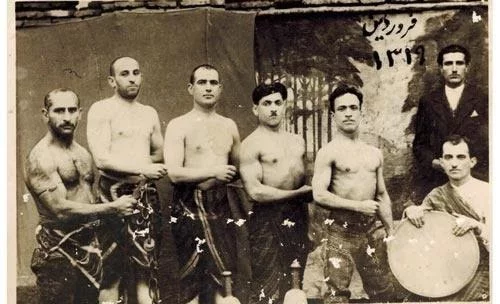
Want to learn more about the Iranian Culture and its beautiful quirks? Dig Deep into the Enriched Culture of Iran. Check out all of our In-depth Cultural Tours.
In the old days, sports were mostly done as preparations for war. As a result, they were designed in a way to prepare men for the battles both mentally and physically. However, there were times of peace, in which people enjoyed exercising for being healthy and as an enjoyable pastime. It can be the reason why many performative aspects were added to sports all around the world.
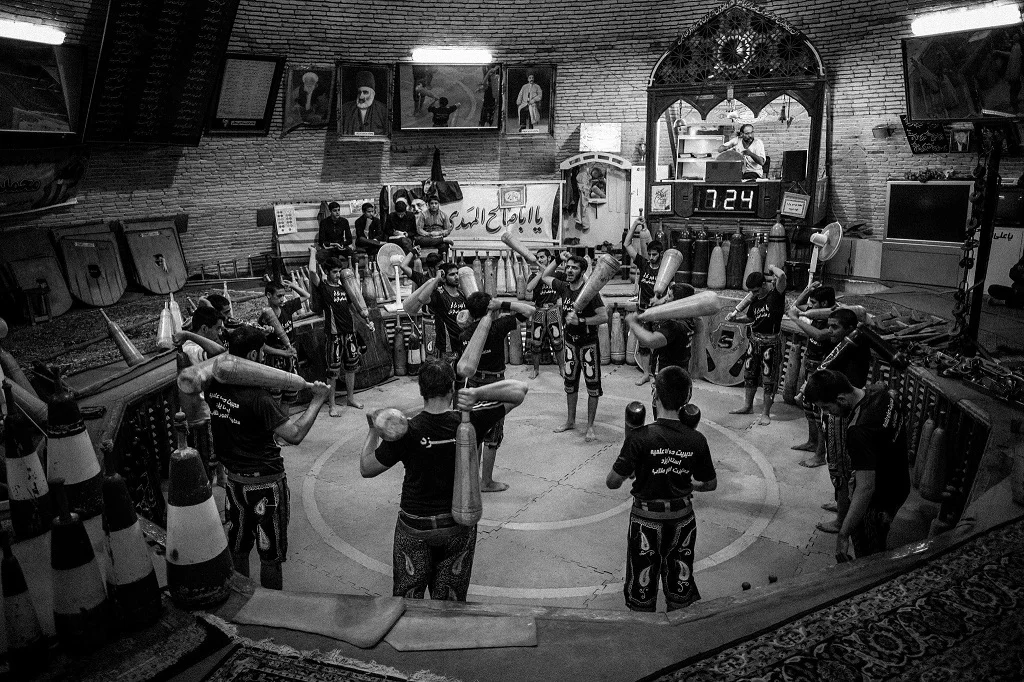
Ancient Iranian athletics also comes from these origins. It can be traced back to when the Parthians ruled the Persian empire from 247 BC to 224 AD. Athletes would gather in a domed structure called Zourkhaneh and exercise in already established orders while listening to music and poetry carried on by a Morshed. A Morshed is a well-read man who usually knows the poems of the Iranian epic poetry book Shahnameh and other great Iranian poets such as Mowlana by heart and sings them to the athletes to encourage them and teach them the morals of great heroes. He usually plays the drum and coordinates the movements performed by the athletes.
The Spirit of Pahlevani; What Does It Mean?

The word Pahlevan originally comes from the Parthian language and still exists in the Persian language spoken by the Iranians, Tajiks, and Afghans, and it means hero.
As the name suggests, we can find the true spirit of ancient Iranian athletics in the characteristics attributed to the heroes; chivalrous acts being done by good-hearted men who care deeply for their country and their people.
These attributes and characteristics are fully described in the Iranian epic poetry Shahnameh by the great Iranian poet Ferdowsi. In Shahnameh, the book of kings, Ferdowsi speaks not only of kings but of great heroes, Pahlevans, who helped their king and people at times of difficulties and led their nation to better places. Probably the most famous of the Shahnameh heroes is Rustam.
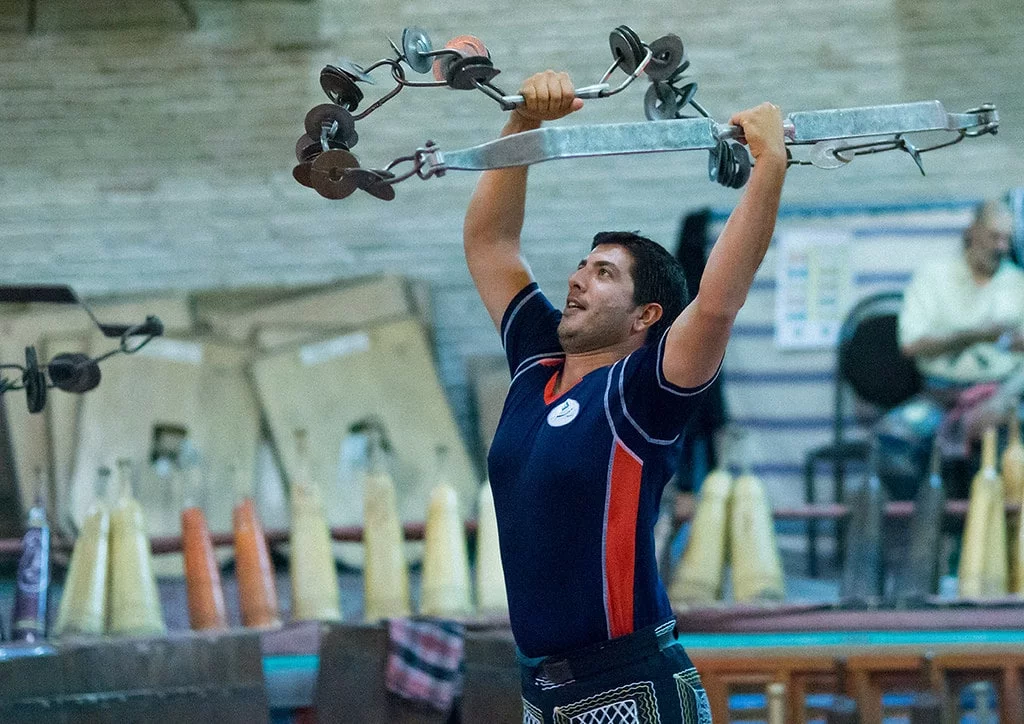

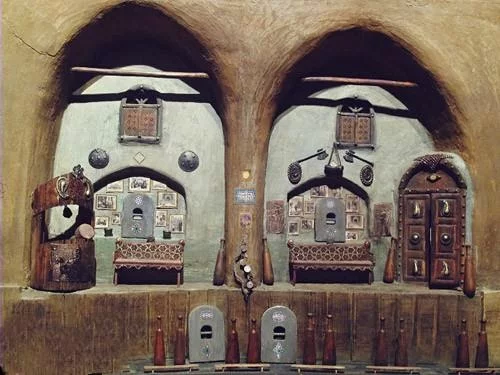


Rustam is the most influential character who is well-known not only in Iran but also in countries such as India, Turkey, Afghanistan, and many more. He is the hero who stands up at the hardest of times to defend his country, morals, and people; the one who cares too much about his people that he is ready to sacrifice his life to help them.
Another important figure in Zourkhaneh is a Pahlevan, very well-known in Iran by the name of Pouria Vali. He is considered both an athlete and a Sufi, who carried the characteristics of a true Pahlevan; many Zourkhaneh in Iran are named after him.
These are the stories recited at the Zourkhaneh for the sportsmen, to instill in them a sense of pride and duty, alongside a deep love for life. The traditional Iranian wrestling (Koshti) is assumed to be practiced and performed by Rustam, and it has more or less become the core of Iranian combat training. These days it is referred to as Varzesh-e-Baastani (ancient sport) and Koshti-Pahlevani (heroic wrestling) and is practiced in the sports complexes and Zourkhaneh all around the country.
Zourkhaneh; What Is It?
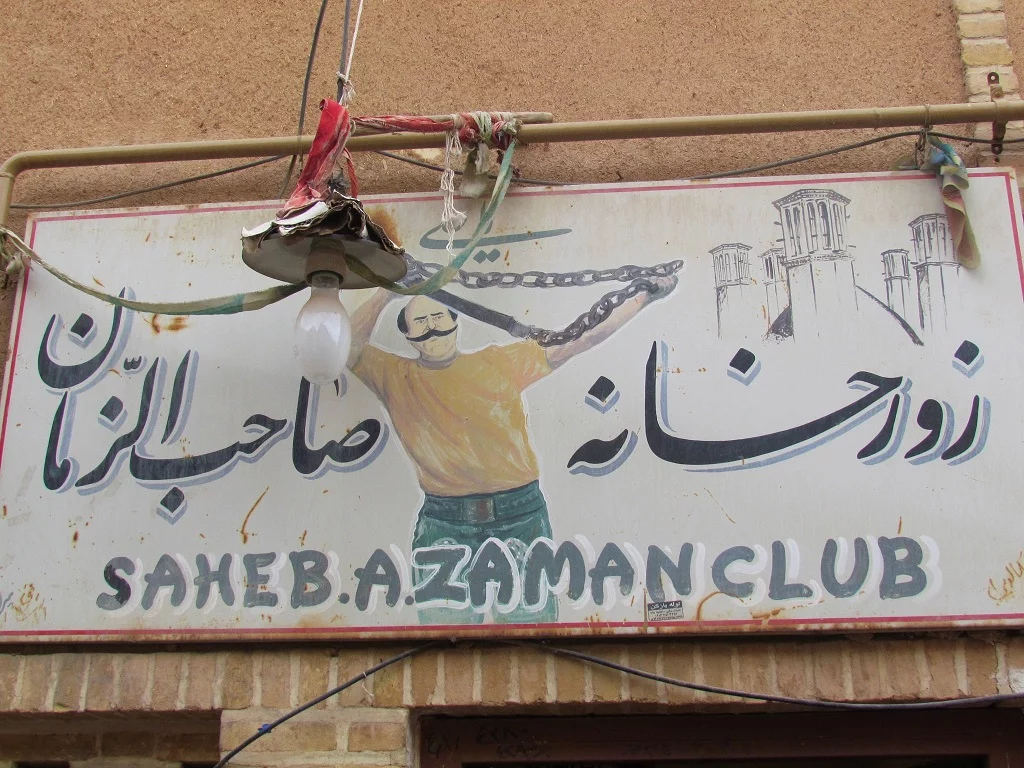
Zourkhaneh literally means the house of strength. It is a gymnasium in the form of a domed structure, which could easily be found in the old times at every corner of the cities. These days, however, they can be found mostly in the older parts of the cities.
Zourkhanehs are designed in a way to magnify the ritualistic aspects of ancient Iranian athletics. These covered structures only have a single round opening in the ceiling to represent the sun and let in the light. In this way, the athletes and the audience’s full attention is on the sports performed at the center. There is a sunken, 1-meter deep, circular pit at the center called gaud. It is where gymnastics, calisthenics, and eventually the wrestling would occur. Around the gaud is the section on which the audience and other athletes would sit in a circular order.

Morshed, about whom we have already talked about, would sit in a higher position than the rest of the attendants to see and orchestrate the athletes. Another reason for this is that the Morshed is usually an old, knowledgeable man whose wisdom everyone respects and Iranians place those whom they respect a lot in a higher position all the time as a sign of respect. A core belief, highly held sacred in the Zourkhaneh culture, is respecting the elders. Whether it is a group performance or an individual one, the athletes must ask for permission when they are about to start because the rankings in this system are very important.

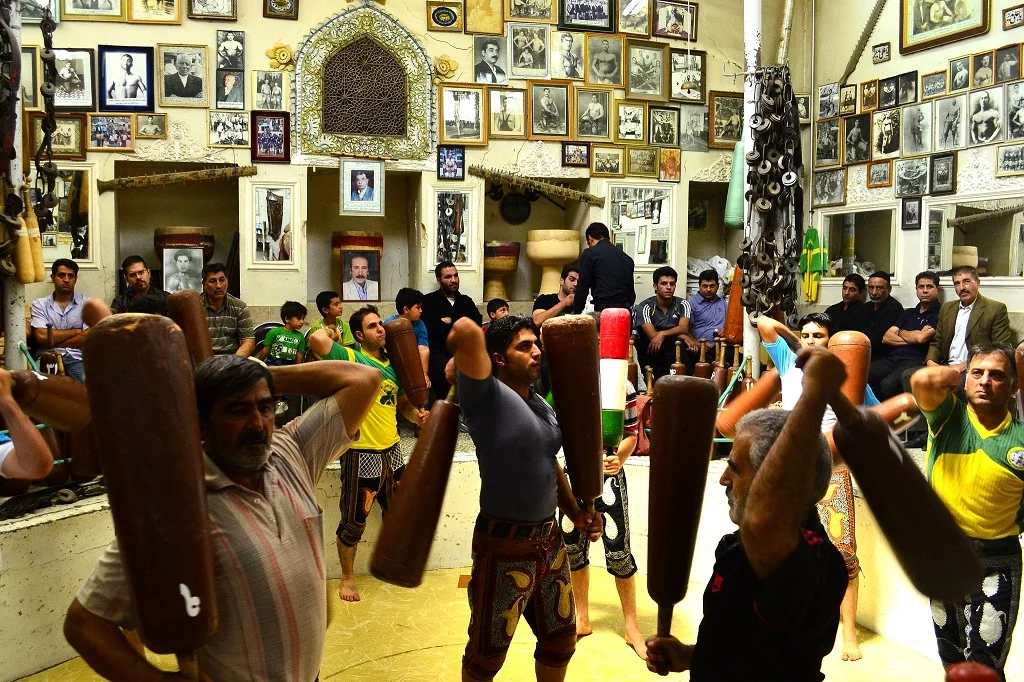

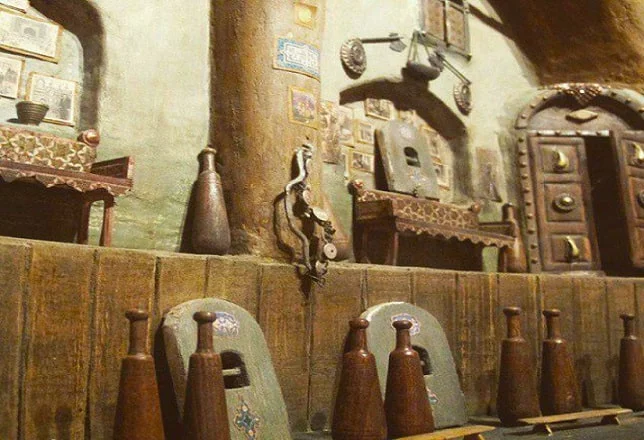
While visiting a Zourkhaneh, one would notice that the gaud, the place in which the main athletic events occur, is located somehow in a lower position compared to the rest of the structure. It is structured in this way because it could be seen better by the audience and instill in them a sense of unselfishness. Modesty is of great importance in ancient Iranians’ teachings and rituals, and still today, it is regarded as one of the most valuable features a person should have. While entering a Zourkhaneh, you will also notice the door’s placement and the entrance, making you lower your head a bit and bow a little before entering the structure. Everyone is reminded of the importance of being humble not only toward God but also other people.
The domed ceiling represents the sky, with the circular opening representing the sun, to recreate the human’s position in the vast universe; a tiny creature that should live in accordance with the rest of the universe and help others in life.
The Ritualistic Nature of Ancient Iranian Athletics

Ancient sports and heroic wrestling did not only prepare warriors for battles. They trained men on how to be better human beings. They created patriots who defended their country at any cost. They taught generations of Iranians that everyone can be a hero and must be a hero for the sake of his own life and the life of his loved ones. They instilled a sense of duty, trust, and respect in people who grew up to help each other with difficulties.
Golrizan (Casting of Flowers)

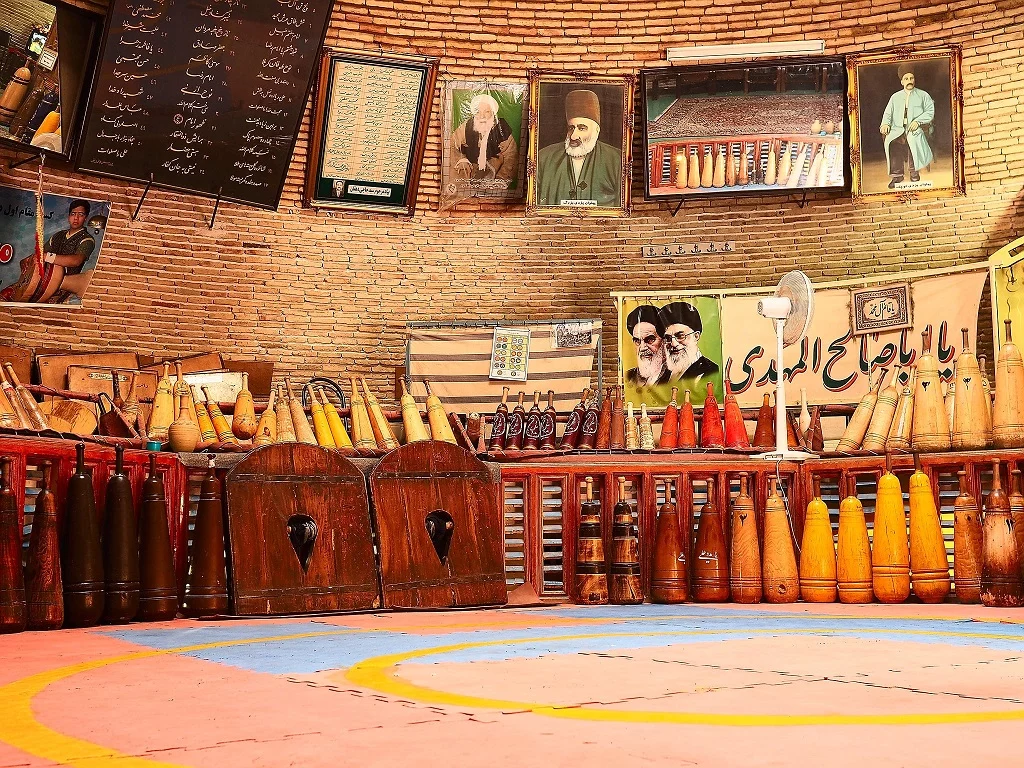

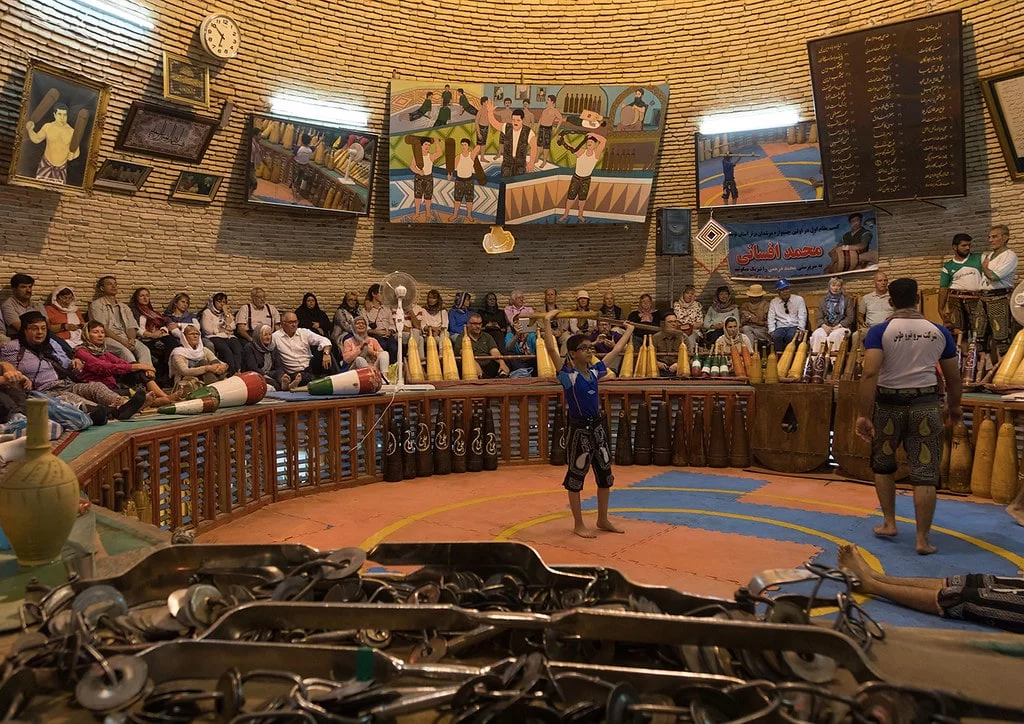
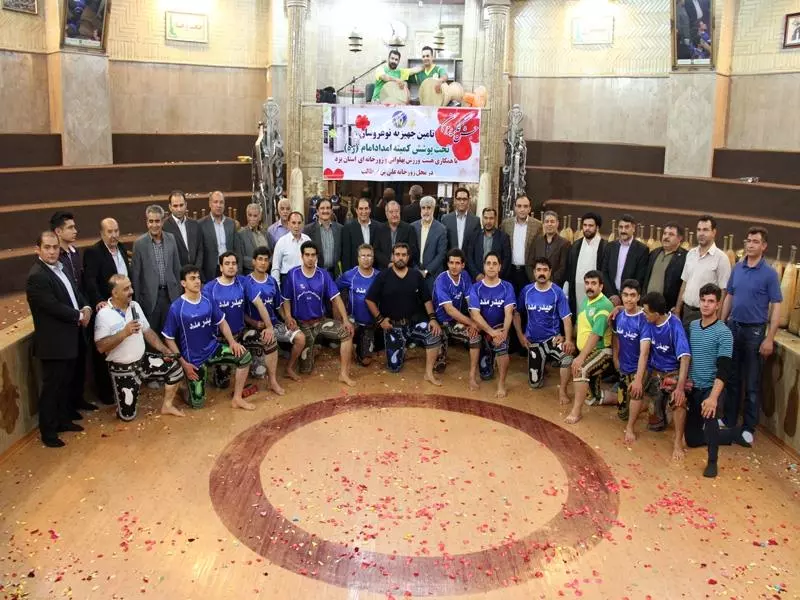
No one pays for entering a Zourkhaneh, neither the athletes nor the audience. However, when someone is in desperate need of support and money, a ritualistic ceremony is held in Zourkhaneh known as Golrizan, which literally means casting flowers. The fellow in need might never be named if he wishes so, but the problem is shared, and anyone who wishes to help can simply join. In this ceremony, the rose flower is cast by the audience into the gaud, as a sign of joy and happiness pouring like the rain.
Pre-Islamic, Shi’a, and Sufi Influence

Iranians have always believed that a healthy mind lives in a healthy body. From ancient times, people would gather in Zourkhanehs to train their minds and bodies to be constantly reminded of the importance of not being selfish, caring for others, and respecting the elders. All people with different ranks and differing social statuses would sit together and watch their Pahlevans. A sense of unity and trust was shared among them, which has shaped the Iranian culture in time. One of the most famous poems always recited in Zourkhaneh by Morshed is by Ferdowsi, showing how vital physical and mental health was and has been to the Iranians. The verse says: a good man is known for his strength and honesty; all the bad comes from perversity and deficiency.
All the movements and gestures practiced and performed by the athletes follow an already established order designed to magnify the core beliefs held sacred in the Zourkhaneh culture. One of these movements is called Charkh-Zadan, or wheeling, which the doctors say is very beneficial for the body.
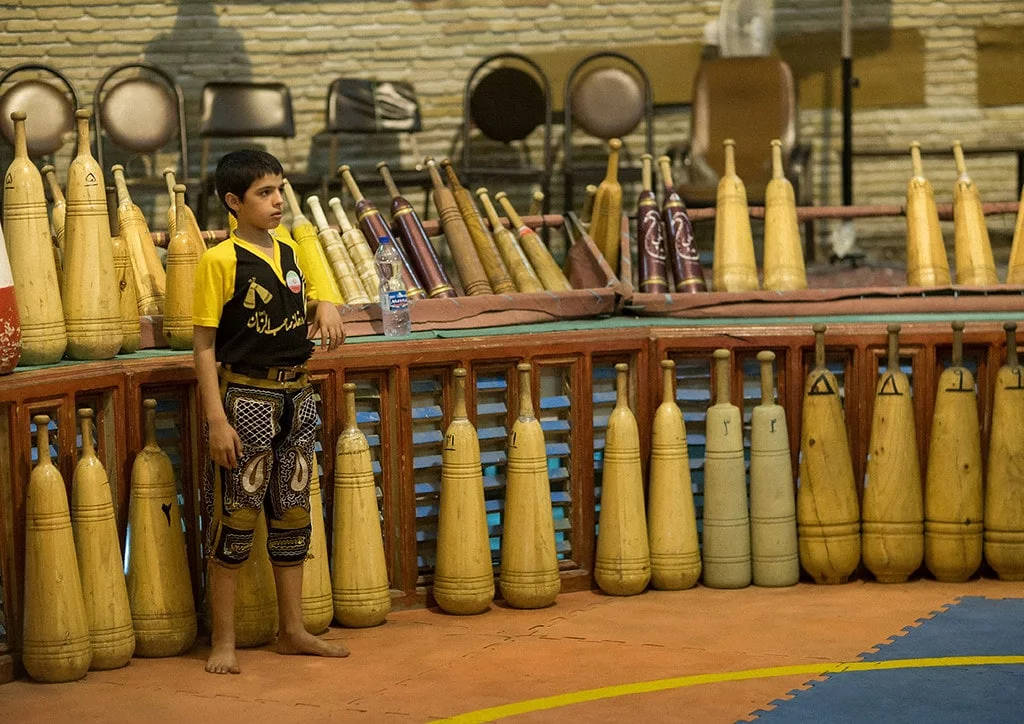
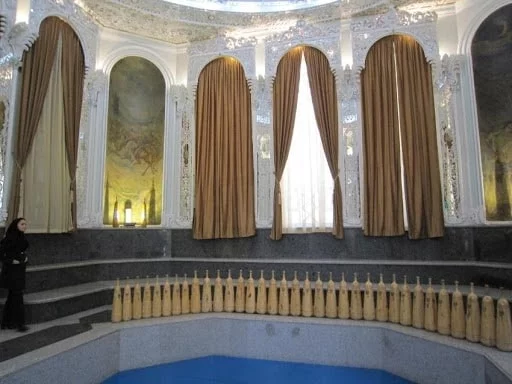



With the Arab invasion of Iran in 633 AD, the Zourkhanehs at every corner of the cities became the secret meeting places for people who fought the invaders. However, as time went by and Iranians accepted Islam as their religion, Islam’s attributes and teachings affected the rituals of Pahlevani athletics. The great Muslim heroes and their deeds and actions were recited just like Rustam’s by the Morshed. Also, the Sufi ranks and orders were added to some parts of the rituals. As the athletes of Zourkhaneh believe that they need to train their soul just like their body, they have some ranks such as (“master”), pishkesvat (“leader”), tāj (“crown”), and faqr (“poverty”); that each athlete needs to go through step by step and learn new things to be qualified for the next round. The names and orders are common between Sufism and Zourkhaneh rituals.
Pahlevani and Zourkhaneh Rituals; A Cultural Pillar

UNESCO has inscribed Varzesh-e-Pahlevani (heroic athletics) of Iran as one of the world’s heritages from Iran and the longest-running form of these types of athletics in the world. Fusing elements of pre-Islamic Persian culture, mainly Zoroastrianism and Mithraism with the Shi’a Islam and Sufi elements, these sports and the rituals accompanying them are the best representations of the vast, diverse, and old Iranian culture that has a lot to offer the world.
